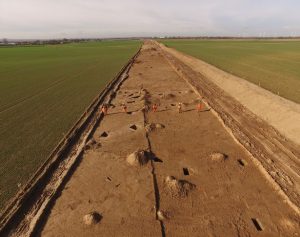Archaeologists unearthed over 30000 artefacts at the future site of the world’s largest offshore wind farm near Grimsby, North East Lincolnshire, United Kingdom.

The excavations were conducted as the onshore construction phase for the Hornsea Project One scheme, which includes the onshore cable route which runs for about 40km from Horseshoe Point to a substation in North Killingholme. Among the finds are two Iron Age settlement sites, three Romano-British settlement sites, two medieval moated sites and evidence of prehistoric farming activity. Archaeological fieldwork including trial trenching, excavation, a watching brief, earthwork surveying and historic building recording was undertaken by researchers from Wessex Archaeology led by Richard O’Neill who coordinated the work of 70 people over two years. Their work included excavation of two Iron Age settlement sites in North Killingholme, prehistoric farming activity and a Romano-British settlement in Stallingborough, Romano-British settlement sites in Tetney and Holton le Clay, and medieval moated sites in Habrough and South Killingholme.

According to the archaeologists, one of the more interesting finds was a medieval burial found near Killingholme. The individual was not buried at the medieval hospital or cemetery which we know existed three miles to the north west. The body was actually found in the upper level of a field boundary, on the outside of a moated enclosure. Among other finds were two human burials (one medieval and one Roman) near Killingholme, Bronze Age pottery at a site in Holton le Clay, late prehistoric or Romano-British settlement activity in Tetney, two Medieval or early post-Medieval salterns (salt production sites) in North Coates. Discovered artefacts include an array of finds predominantly pottery and animal bone, but also metalwork (coins, fragmented brooches, a ferrous knife and nails) and quernstones, as well as marine and fresh water shells consumed throughout the ages.

(after Grimsby Telegraph)